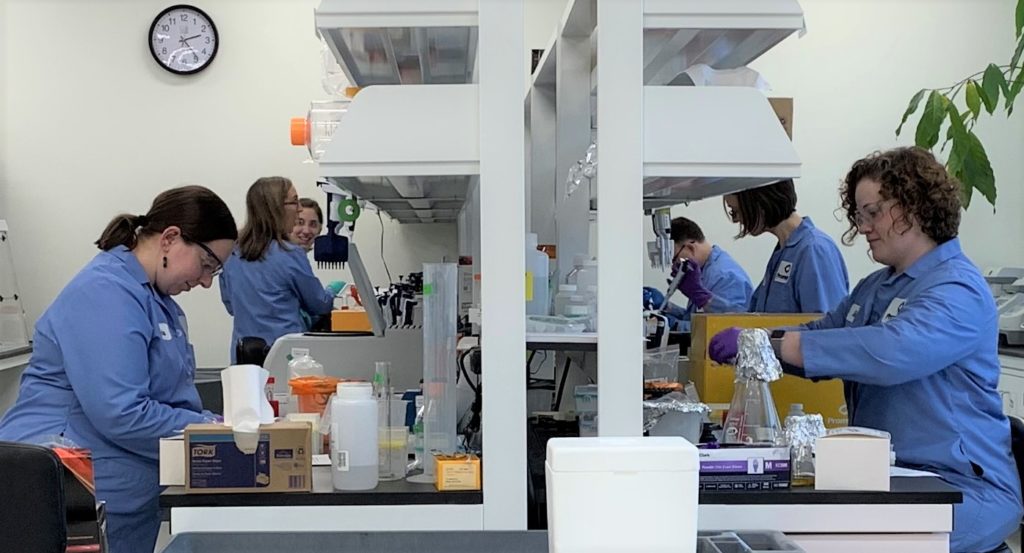The COVID-19 pandemic has affected virtually everyone’s lives and business, and Promega is no exception. If you’re a frequent reader of Promega Connections, you have probably noticed that many of our recent blog posts have mentioned the novel coronavirus.

As Applications Scientists at Promega, we have adapted our work to enable support of our Promega colleagues and their customers as they respond to the pandemic. Like other groups in the company, we have ramped up our efforts. Our team typically has a broad focus on a variety of projects from across market segments of the company. During the second week of March, we switched to completely focus on virus-related experiments. Everyone on our team was in the lab collaborating on a large project to determine which kits could be used to purify viral nucleic acid from universal transport medium for virus (UTM®) and sputum, knowing that customers would be using any kit that they had on hand to do testing quickly. We completed testing in two days and data analysis and write-up within another couple of days.
In the last six weeks, we have worked on over 30 projects and completed almost 20 of them. In some cases, we identified, resourced, and began projects in the same day. In other cases, we completed projects within a day or two of receiving the request. You can find some of our data, presented as “Viral RNA Extraction Application Notes”, here.
Many projects originated from direct questions from global branches, Technical Services, and other internal colleagues on behalf of their customers. Some projects resulted from a need we identified, such as testing alternative storage methods for swab transport due to shortage of UTM®. Projects ranged from testing purification kits with relevant sample types, to comparing amplification reagents, and participating in work on forthcoming virus-related products.
Continue reading “Adapting Our Projects, Our Experiments, and Ourselves to Support COVID-19 Response”